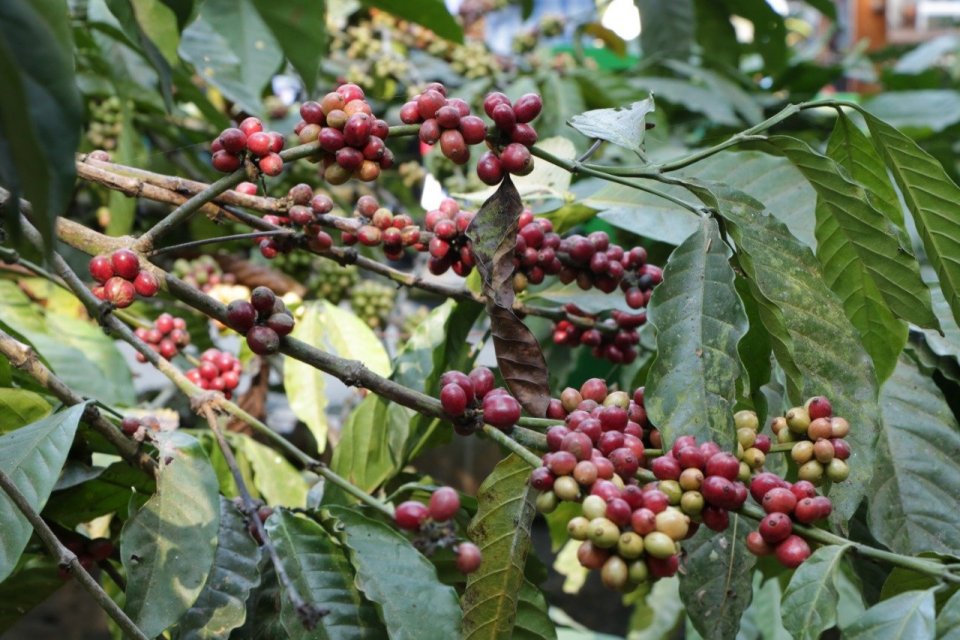If you are currently following a ketogenic diet, also called keto, then you have probably…

Indonesia’s Coffee Growing Regions
Indonesia’s 17,000 islands include many unique growing regions especially suited for growing coffee, places whose names have become iconic in the specialty coffee world. There are also many other areas suitable for growing coffee, whose coffee is not being exported, or who have not yet been growing it.
Here are some of well established coffee regions and their unique flavor profiles.
Sumatra
Sumatra is not only the largest island in Indonesia, but it’s also the sixth biggest island in the world. It’s situated in the northwest region of Indonesia. Due to its location, Sumatra has the country’s earliest harvest season – November to March. Sumatra coffee is especially known for its ultra heavy body, earthy spice, and very low acidity. Flavor-wise it is the most easily distinguishable of the world’s great coffees. Sumatra green coffee has a beautiful deep blue-green color with the appearance of jade.
Characteristics : Deep, full flavored, full-bodied with chocolate, spice, clean earth, and caramel/butterscotch notes. Slight notes of smoke and tobacco, and big, clean, lingering finish with chocolate and a hint of butterscotch.
Subregions : One particular well-known type is Aceh Gayo ~ Aceh is the name of the region, and the Gayo are the people group with the coffee-growing expertise. There are various grades of coffee coming out of this origin, not all high quality, since they are able to produce so much volume. Typical flavors are: complex flavor, green, grassy, clean, and balanced.
Sumatra Mandheling is among the world’s finest coffees displaying rich flavor, extraordinary full body and distinctively vibrant, low-key acidity.
Java
Java estate coffee has the special flavors of medium body, high acidity, rich aroma and flavor, and spicy tone. Several different processing methods are used on Java: fully washed, wet hulled, and natural. Most of Java’s coffee is grown on five government-owned estates : Blawan, Tugosari, Pancoer, Jampit, and Kayumas. All these estates are located on the Ijen Plateau at around 1,300 meters. In recent years, though, smallholder farms in Java have been producing high-quality coffee, giving consumers even more options.
Characteristics : Clean cup, sweet, fresh, high acidity, lemony, spicy, with an aftertaste of dark chocolate.
The famous (or infamous?) “Kopi Luwak”, or civet cat coffee, is produced on Java as well.
However, from time to time we find a wild-harvested source which we do sell. It’s expensive so you’d better really want it.
Bali
Bali is renowned for its beautiful beaches, coral reefs, and yoga and meditation retreats. This tropical paradise provides some of the best coffee Indonesia – and the world – has to offer. The coffee of the famed island paradise of Bali is usually processed with full washed dry hulling, giving it a citrus character.
Characteristics : Clean cup, sweet, fresh, high acidity, lemony, spicy, with an aftertaste of dark chocolate
Subregions : The Kintamani Bali coffee beans are generally larger in size than the Arabica beans from other origins in Indonesia. Very good cup taste, similar to Java, although the Java normally provides a spicy note.
South Sulawesi
Formerly known as Celebes, Sulawesi has six different provinces. South Sulawesi, one of these provinces, is where a majority of Sulawesi’s coffee is grown, specifically in the Toraja highlands on smallholder farms. These farmers mostly utilize the wet-hulling method, but some of them fully wash their coffee beans. Since Toraja is such a mountainous region, it allows coffee to be grown at higher altitudes than the Indonesian islands. This high altitude – up to 6,000 feet above sea level – helps give the coffee a cleaner, smoother finish.
Characteristics : Clean clear, smooth floral, complex, nice acidity, sweet, fruity, salty. Slightly earthy and herbal.
The Toraja region produces a complex flavor, fresh bright, chocolatey, clean, sweet, nice, herbal, spicy, excellent acidity, good balance. Astringent, grassy. Perhaps the best of Indonesian coffee from any region.
When compared to other Indonesian coffees, Sulawesi tends to be on the lighter side of the spectrum. However, it’s still a strong, bold variation with low acidity and creamy texture. The aroma is nutty and chocolatey, while the flavor provides notes of fruit, dark chocolate, and spices such as cinnamon and cardamom.
Flores
Compared to other Indonesian islands, Flores is relatively small, spanning 200 miles from end to end. The island is known for its rich vegetation and is one of the few places where you can see the endangered Komodo Dragon. However, its coffee remains a cornerstone. Most of the coffee is grown in the town of Bajawa is at a height of 1,200 to 1,800 meters. Flores has a rugged terrain with several active and inactive volcanoes. The ashes from volcanic eruptions have created fertile andosols, which are soils perfect for organic coffee production.
Farmers on Flores utilize the wet-hulling process. This method, combined with Flores’ location, gives the coffee a sweet, milk chocolate taste with floral, woody notes and a syrupy body.
Flores coffee has complex and excellent flavor, spicy, good balance, fresh, clean, and the best examples of it also add a flavor that is mild, buttery, floral, and sweet (good for espresso).
Characteristics : Full body, rich acidity, rich aroma and flavor, balanced taste.



